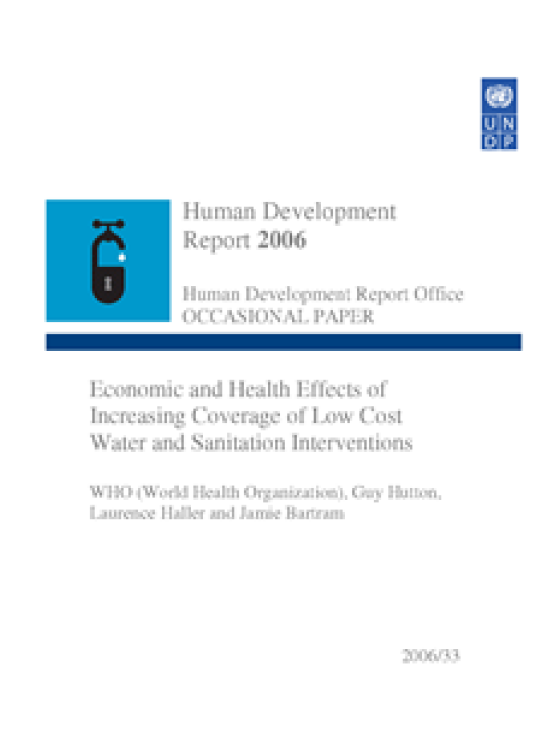Economic and Health Effects of Increasing Coverage of Low Cost Water and Sanitation Interventions

Download Report by Language
Document
who.pdf
(1.13 MB)
Citation
WHO (World Health Organization), Hutton, Guy, Haller, Laurence, Bartram, Jamie. 2006. Economic and Health Effects of Increasing Coverage of Low Cost Water and Sanitation Interventions. New York.
Economic and Health Effects of Increasing Coverage of Low Cost Water and Sanitation Interventions
Posted on: January 01, 2006
benefits of improving water supply and sanitation services. Improvements were made using low cost options to achieve maximum coverage and achieve the MDG and universal coverage targets modelled in this study. Specifically, the two sets of targets modelled were (1) attaining the water and sanitation MDG targets to halve the proportion of the population without access, modelled separately and together, and (2) universal access to improved water and basic sanitation, modelled separately and together. The comparator for these targets was the predicted coverage in 2015, based on the trend line between coverage figures reported in 1990 and 2004, which predicts that at current trends the world is expected to fall short of meeting the water MDG by 354 million people and the sanitation MDG by 564 million people. Results are presented for 6 non-OECD world regions and for 15 selected developing countries at greatest risk of not meeting the MDGs for water and sanitation. Predicted reductions in the incidence of diarrhoeal disease were calculated for each intervention based on the expected population receiving these interventions and the relative risk reductions of populations moving to different exposure scenarios. Deaths averted were estimated based on a region- and age-specific case fatality rate for diarrheal disease. The costs of the interventions included the full investment and annual running costs. The benefits of the interventions included time savings associated with better access to water and sanitation, gain in productive time due to less time spent ill, economic gains associated with saved lives, health sector and patient costs saved due to less health seeking.

